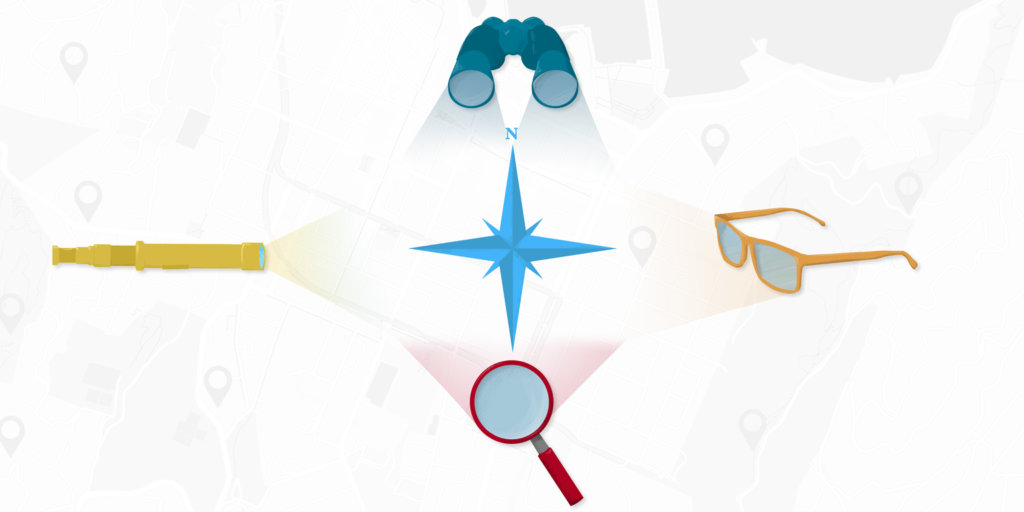The Four Perspectives of Improved Decision-Making
How we make decisions
We often talk about agile work practices and dynamic strategic execution as a critical part of the ‘fabric’ of business innovation, but for some reason, we are not able to push this way of thinking and working back into the strategic decision-making process–what we call “ideation”. This month HBR tackles the issue of “discovery-driven innovation”, and it aligns well with our thinking and approach.
Discovery-driven innovation
Discovery-driven innovation relies on some key fundamental decision-making perspectives. Without considering those perspectives, we can become trapped in lengthy periods of deliberation where bad ideas proceed unchecked, there is the opportunity cost of lost ideas, and it’s a dampener on team morale.
What are the four perspectives that were identified?
Customer: I am sure this will come as no surprise to many. Customers bring us a very key insight: they own the problem to be solved. It forces us to answer the question “is the formative idea resolving a customer pain point?”. To enable this level of understanding, decision-makers need to listen to those who are nearest the customer.
Location: The traditional approach to decision making follows the hierarchy of the org chart. Key strategic decisions move through chain-of-command gates, finally reaching the upper echelons of the senior leadership team for the final go / no go approval. Often the original idea becomes diluted. How it resolves the problem to be solved decreases based on the experiential knowledge and biases of people at each decision gate. Innovation must be transparent between those nearest to the customer and those making the decision to proceed.
Data: Supporting information (quantitative and qualitative data) needs to be readily available and delivered in a timely fashion to decision-makers. Having been in the data delivery market for longer than I care to remember, this is never as easy as launching a software tool and having a eureka moment as you gaze upon a data visualization with discoveries leaping off the screen. What is required is to encourage decision-makers to consider an outcome as part of the ideation process. By outcome, we mean a quantified value, a metric. We need to answer the question “what will this decision mean to the customer and the business in real terms” and what will success look like?
Outside: Entrained thinking can be a major handbrake for innovative decision-making. Of course, people rely on their experience to help them decide. For complex problems we have faced in the past, this can work extremely well, but for new solutions to novel problems we need to use external stimuli whenever possible. Outside viewpoints are critical–whether they be outside the organization or outside of the traditional decision-making team. HBR describes it perfectly as a “companies’ dominant logic”. This dominant logic can have the effect of rejecting bold, high-risk, high-reward ideas that may cannibalize existing business.
Where to next
Bringing these four perspectives together into a unified process for ideation does not need to be complex.
- Make idea creation and decision-making more inclusive. Utilize a mechanism that reduces the gap between those with the knowledge of the customer pain point and the final decision gate.
- Reduce the number of gates by democratizing the ability to approve new ideas. Have trust in the experts in your team, they are nearer to the problem. It is ok for senior leaders to admit they don’t know; in fact, it is critical. This will encourage outside involvement.
- Create a healthy debate, challenge new ideas, encourage people to answer the question: “if we don’t do this, could we do something better?”.
- Ensure new Ideas are aligned to vision. Then we know this idea will be taking us to a destination recognized and agreed upon enterprise-wide.
- Finally, when ideation occurs, ensure people think about the four perspectives, and don’t allow premature decisions to be made. Ensure they have considered the customer problem, that they have thought about it from every angle, that they have anticipated an outcome, and that they have collaborated and encouraged an outside viewpoint.
This is the last blog from me this year, Merry Christmas and Happy New Year. 2022 will be an interesting year as we move further into the field of ideation, and please, keep strategizing.




Leave A Comment